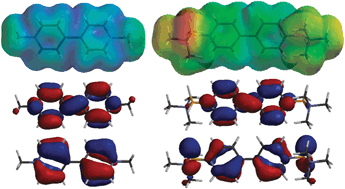A new building block for electroactive organic materials? Synthesis, cyclic voltammetry, single crystal X-ray structure, and DFT treatment of a unique boron-based viologen†
Abstract
A boronium-based

* Corresponding authors
a
Department of Chemistry, Birmingham Southern College, Birmingham, Alabama 35254, USA
E-mail:
sdorman@bsc.edu
b
Department of Chemistry, University of South Alabama, Mobile, Alabama 36688, USA
E-mail:
jdavis@jaguar1.usouthal.edu
Fax: 01-251-460-7359
Tel: 01-251-460-7427
c Department of Chemical & Biomolecular Engineering, University of South Alabama, Mobile, Alabama 36688, USA
A boronium-based

 Please wait while we load your content...
Something went wrong. Try again?
Please wait while we load your content...
Something went wrong. Try again?
S. C. Dorman, R. A. O'Brien, A. T. Lewis, E. A. Salter, A. Wierzbicki, P. W. Hixon, R. E. Sykora, A. Mirjafari and J. H. Davis, Chem. Commun., 2011, 47, 9072 DOI: 10.1039/C1CC12265G
To request permission to reproduce material from this article, please go to the Copyright Clearance Center request page.
If you are an author contributing to an RSC publication, you do not need to request permission provided correct acknowledgement is given.
If you are the author of this article, you do not need to request permission to reproduce figures and diagrams provided correct acknowledgement is given. If you want to reproduce the whole article in a third-party publication (excluding your thesis/dissertation for which permission is not required) please go to the Copyright Clearance Center request page.
Read more about how to correctly acknowledge RSC content.
 Fetching data from CrossRef.
Fetching data from CrossRef.
This may take some time to load.
Loading related content
